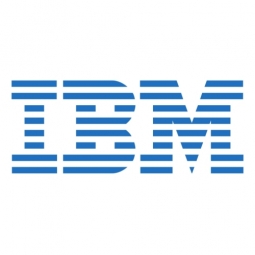Download PDF
Southern Ontario Smart Computing Innovation Platform (SOSCIP) Boosting long-term economic development with cutting-edge collaborative research
Technology Category
- Analytics & Modeling - Big Data Analytics
- Analytics & Modeling - Real Time Analytics
- Infrastructure as a Service (IaaS) - Cloud Computing
- Platform as a Service (PaaS) - Data Management Platforms
Applicable Industries
- Education
- Healthcare & Hospitals
- Utilities
Applicable Functions
- Business Operation
Use Cases
- Edge Computing & Edge Intelligence
- Predictive Maintenance
- Real-Time Location System (RTLS)
Services
- Cloud Planning, Design & Implementation Services
- Data Science Services
- System Integration
The Challenge
SOSCIP aimed to develop an attractive ecosystem that would help to keep research talent and startups in Ontario. The goal was to connect leading academic institutions with small- and medium-sized enterprises (SMEs) to provide a competitive edge by accelerating research. SOSCIP and its partners wanted to develop intellectual property such as patents, and support the commercialization of research results through collaborative projects. As the SOSCIP consortium was forming, the organization sought a lead industrial partner to establish the computing technologies and collaborative research and development model upon which the consortium was founded.
About The Customer
Southern Ontario Smart Computing Innovation Platform (SOSCIP) is a research and development consortium that pairs academic and industry researchers with advanced computing tools to fuel innovation leadership in Canada within the areas of agile computing, health, water, energy, cities, mining, advanced manufacturing, digital media and cybersecurity. SOSCIP members include Carleton University, Laurier University, McMaster University, the University of Ontario Institute of Technology, the University of Ottawa, Queen’s University, Ryerson University, the University of Toronto, the University of Waterloo, Western University, York University, Ontario Centres of Excellence and the IBM Canada Research and Development Centre. The Federal Government of Canada, the Province of Ontario and IBM Canada have invested more than CAD210 million (USD167 million) to create this unique innovation cluster.
The Solution
The consortium has deployed four advanced computing platforms to support ground-breaking research, all based on IBM solutions. The first platform, designed to handle large-scale distributed applications that require massive parallel processing power, is Canada’s fastest supercomputer, based on IBM Blue Gene/Q technology. The second platform, for agile computing, uses a combination of IBM POWER8® processor-based servers and Field-Programmable Gate Arrays to support applications including real-time data stream processing, machine learning and physical systems simulation. Thirdly, the Large Memory System platform offers a virtual symmetric multiprocessing environment running IBM analytics software for data-intensive projects involving in-memory databases, key-value storage and large computations. The fourth platform deployed by SOSCIP is Canada’s first research-dedicated cloud analytics platform, uniquely providing access to a broad suite of IBM analytics solutions—including IBM InfoSphere® Streams, Hadoop-based IBM InfoSphere BigInsights™, IBM Cognos® and IBM SPSS®—that can be combined with other software to create customized virtual research environments.
Operational Impact
Quantitative Benefit
Related Case Studies.

Case Study
IoT Solutions for Smart City | Internet of Things Case Study
There were several challenges faced: It is challenging to build an appliance that can withstand a wide range of voltage fluctuations from as low at 90v to as high as 320v. Since the device would be installed in remote locations, its resilience was of paramount importance. The device would have to deal with poor network coverage and have the ability to store and re-transmit data if networks were not available, which is often the case in rural India. The device could store up to 30 days of data.

Case Study
Automation of the Oguz-Gabala-Baku water pipeline, Azerbaijan
The Oguz-Gabala-Baku water pipeline project dates back to plans from the 1970’s. Baku’s growth was historically driven by the booming oil industry and required the import of drinking water from outside of the city. Before the construction of the pipeline, some 60 percent of the city’s households received water for only a few hours daily. After completion of the project, 75 percent of the two million Baku residents are now served around the clock with potable water, based on World Health Organization (WHO) standards. The 262-kilometer pipeline requires no pumping station, but uses the altitude differences between the Caucasian mountains and the capital to supply 432,000 m³/d to the Ceyranbatan water reservoir. To the people of Baku, the pipeline is “the most important project not only in 2010, but of the last 20 years.”

Case Study
GPRS Mobile Network for Smart Metering
Around the world, the electricity supply industry is turning to ‘smart’ meters to lower costs, reduce emissions and improve the management of customer supplies. Smart meters collect detailed consumption information and using this feedback consumers can better understand their energy usage which in turn enables them to modify their consumption to save money and help to cut carbon emissions. A smart meter can be defined in many ways, but generally includes an element of two-way communication between the household meter and the utility provider to efficiently collect detailed energy usage data. Some implementations include consumer feedback beyond the energy bill to include online web data, SMS text messages or an information display in consumers’ premises. Providing a cost-effective, reliable communications mechanism is one of the most challenging aspects of a smart meter implementation. In New Zealand, the utilities have embraced smart metering and designed cost effective ways for it to be implemented. The New Zealand government has encouraged such a move to smart metering by ensuring the energy legislation is consistent with the delivery of benefits to the consumer while allowing innovation in this area. On the ground, AMS is a leader in the deployment of smart metering and associated services. Several of New Zealand’s energy retailers were looking for smart metering services for their residential and small business customers which will eventually account for over 500,000 meters when the multi-year national deployment program is concluded. To respond to these requirements, AMS needed to put together a solution that included data communications between each meter and the central data collection point and the solution proposed by Vodafone satisfied that requirement.

Case Study
Hospital Inventory Management
The hospital supply chain team is responsible for ensuring that the right medical supplies are readily available to clinicians when and where needed, and to do so in the most efficient manner possible. However, many of the systems and processes in use at the cancer center for supply chain management were not best suited to support these goals. Barcoding technology, a commonly used method for inventory management of medical supplies, is labor intensive, time consuming, does not provide real-time visibility into inventory levels and can be prone to error. Consequently, the lack of accurate and real-time visibility into inventory levels across multiple supply rooms in multiple hospital facilities creates additional inefficiency in the system causing over-ordering, hoarding, and wasted supplies. Other sources of waste and cost were also identified as candidates for improvement. Existing systems and processes did not provide adequate security for high-cost inventory within the hospital, which was another driver of cost. A lack of visibility into expiration dates for supplies resulted in supplies being wasted due to past expiry dates. Storage of supplies was also a key consideration given the location of the cancer center’s facilities in a dense urban setting, where space is always at a premium. In order to address the challenges outlined above, the hospital sought a solution that would provide real-time inventory information with high levels of accuracy, reduce the level of manual effort required and enable data driven decision making to ensure that the right supplies were readily available to clinicians in the right location at the right time.

Case Study
NB-IoT connected smart meters to improve gas metering in Shenzhen
Shenzhen Gas has a large fleet of existing gas meters, which are installed in a variety of hard to reach locations, such as indoors and underground, meaning that existing communications networks have struggled to maintain connectivity with all meters. The meter success rate is low, data transmissions are so far unstable and power consumption is too high. Against this background, Shenzhen Gas, China Telecom, Huawei, and Goldcard have jointly trialed NB-IoT gas meters to try and solve some of the challenges that the industry faces with today’s smart gas meters.

Case Study
OneWireless Enabled Performance Guarantee Test
Tata Power's power generation equipment OEMs (M/s BHEL) is required to provide all of the instrumentation and measurement devices for conducting performance guarantee and performance evaluation tests. M/s BHEL faced a number of specific challenges in conducting PG tests: employing high-accuracy digital communications for instrumentation, shortening setup and dismantling time, reducing hardware required, making portable instrument setup, avoiding temporary cabling work and the material waste costs





